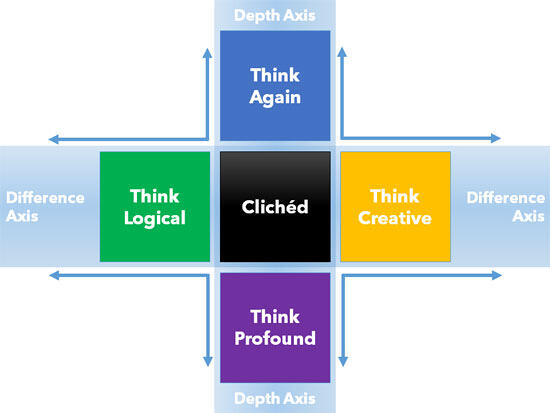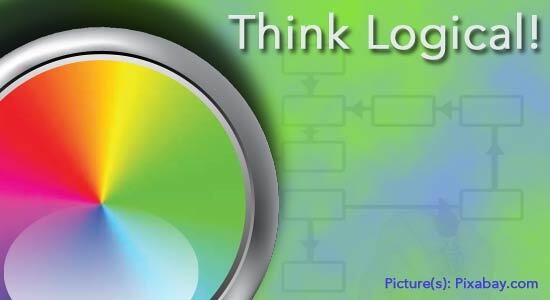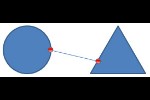Learn about clichés in using common pictures, and how you can overcome them. Thought is the key to rise above these clichés.
Author: Geetesh Bajaj
Product/Version: PowerPoint
OS: Microsoft Windows and Mac OS X
How many times have you seen the same globe visual used within a slide, or even a picture of shaking hands? Or a picture of a phone operator, or even some people smiling as they work in an office?

Most people use such pictures because yes indeed, they do seem relevant to the topic of the slide. And they also use them as they've seen so many other people use the same type of pictures. And that's precisely the problem. These pictures have been used so often, and they are so predictable that the next time the audience sees those same pictures, they will be instantly bored. And that's exactly what a cliché means. It means that these visual themes have been so over-used, that people are just tired of looking at them!
The dictionary meaning of a cliché is something that is overused, or even something that lacks original thought. And the best part is that this simple meaning also provides a solution to the problem that clichés pose. And the solution is to not overuse a visual that's been already saturated within the minds of the audience. Also, you need to think a little out of the box, travel off the beaten path, and thus be more original.

We often may associate a concept or an abstract with the same or even a similar visual thought. Like you may associate handshakes with business and the bulb with an idea. Yes, these are cliched but not bad, because these thoughts are just the beginning. Don't stop here and don't reach a conclusion with that predictable visual thought. In fact, there is not one but four ways to discover more original thoughts, and these provide you with the options to lean upwards, downwards, leftward, or rightwards! Really, it was surprising for me too when we found that these four ways actually represent four unique directions (see figure below):

Let's start with two axes:
The point at which these two axes meet is where your clichéd visual is available now! There are four different directions you can take, and although you are free to proceed in any direction, it is recommended that you first go to Think Creative, then move clockwise to Think Profound, Think Logical, and finally Think Again. At any point in time, if you have already overcome the cliché, then there is no need to proceed further!
Let's learn more about these four directions:
Let's say that you want to use a picture of an apple with a bite? Almost like the Apple Computer logo? Most certainly not, because as it is part of such a visible and recognizable logo. This is already a cliché even before you use it! So now, think why you wanted a graphic of an apple that was bitten? Was it because you wanted to say something is forbidden (and the bit apple reminds you about the Adam and Eve story)? So what else can help you visualize "forbidden"? You could go on Google Images and search for "forbidden", but most of the results will be even more clichéd! Remember that search engines like Google index content based on suitability and popularity, not on their basis of being not clichéd! But scroll down and look for something creative and you will get ideas. We found a picture of a human hand that had a cross over it, and another of a tiger roaring. In fact some apple images also did not look too clichéd. Combine an apple with something else, and it can change the entire visual meaning! So thinking in a creative way will also help.

When we think about our concept or abstract more profoundly (deeply), then we get better visual thoughts. If you just think about an apple, then you will use any picture of an apple. And that will again be a clichéd visual! But when you think profoundly, such as thinking about an apple that's not red, but green. You may also imagine that the apple has a small dent or even a worm crawling on it, then you are already thinking better! There are more ways to think. Did someone bite the apple? Or was the apple on the tree, within a basket, or was even diced, ready to eat? Keep thinking this way to get more ideas. Remember no one will ever think that a picture of a green colored apple with a worm crawling is clichéd and that's your reward for thinking profoundly.

And even after you think deeper, different, or again, there are times that you may not be able to express your visual thoughts clearly! It is one of those times when the right side of your brain cannot provide a solution to a visual dilemma. In this case, knock on your brain's left side! Maybe logic will prevail, and you really don't need a picture? Maybe you need a chart instead, or even a table? Or a map? Or even nothing at all? It's OK to not visually represent everything. Sometimes, in rare scenarios, just words may be enough.

Sometimes, thinking deeper or thinking differently may not help. In that case, you have to accept that your base thought wasn't good enough to start with! The solution now is to go back to the zero level, and start thinking again. The best ideas are born from abandoning ideas that do not work, and then thinking again. Thomas Edison is said to have failed 2000 times before he invented the light bulb. All of us can afford to fail a few times and start thinking again from scratch! If we take our apple example and think again, we may realize that the apple may have not been the right visual thought to begin with. We may have to start with a new thought, and evolve in that newer direction to succeed now.

Ultimately you should always decide what works best in a given scenario. And you can combine two adjacent approaches, such as thinking profound (down) and thinking creative (right). However, you cannot combine two opposite approaches! In the end, you will have achieved your aim to make visuals that look more original.
Now as has been famously said, the proof of the pudding is in the eating! This means that unless you try or use a certain formula, you cannot be sure about its success. So let's test the formula mentioned on this page to overcome clichés. Here are some case studies:
Clichés: Handshake Pictures
Clichés: Globe Pictures
Clichés: Phone Operator Pictures
Clichés: Teamwork Pictures
Clichés: Light Bulb Pictures
Clichés: Target and Dart Pictures
Clichés: Stack of Coins Pictures
Visual Clichés: Overcoming Clichés in Pictures (Glossary Page)
You May Also Like: Becoming a Webinar Expert: Conversation with Ellen Finkelstein | Camel PowerPoint Templates




Microsoft and the Office logo are trademarks or registered trademarks of Microsoft Corporation in the United States and/or other countries.